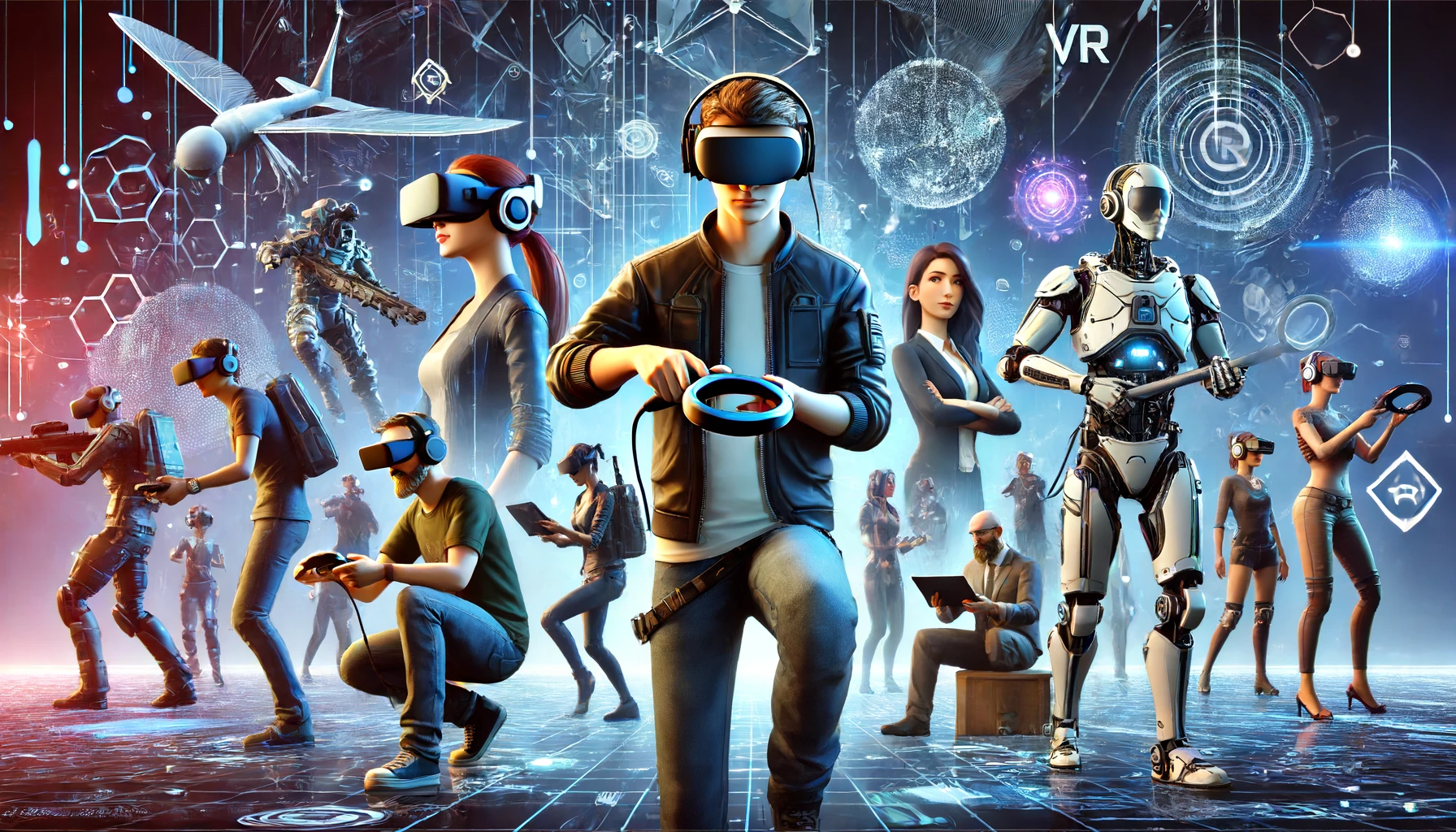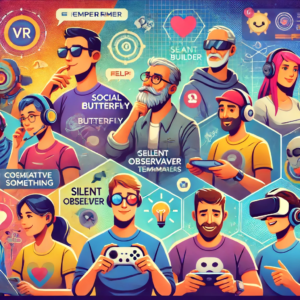The Truth Behind the Headsets: Unveiling the Personalities of VR Gaming Friends
Introduction
Virtual Reality (VR) gaming not only revolutionizes how we play games but also how we interact within them. This article explores how real-world personality traits are represented in VR and how they might predict the roles individuals may gravitate towards, both in-game and professionally.
Dynamics in VR Gaming Communities
Online gaming communities, especially in VR, are shaped by several core dynamics:
- Competition vs. Cooperation: Influences how players interact, whether competing fiercely or collaborating closely.
- Toxicity and Behavior Management: Essential for maintaining community health in the intense, immersive VR environment.
- Leadership and Organization: Natural leaders often find VR a compelling space for exerting influence and guiding teams.
- Communication Styles: The immersive nature of VR amplifies the impact of communication, including non-verbal cues.
- Inclusivity and Diversity: The immersive and interactive nature of VR offers unique opportunities for fostering understanding and inclusivity.
- Adaptability and Change: Players’ ability to adapt to VR’s evolving landscapes mirrors their flexibility in real life.
Different personalities may react and adapt to VR environments in varied ways, impacting their gaming experience:
| Scenario | Social Butterfly | Competitive Leader | Silent Observer | Creative Builder | Helper/Guide | Entertainer | Recovery Time | Potential Conflicts |
|---|---|---|---|---|---|---|---|---|
| New Map Release | Excited to explore with friends, organizes group tours | Analyzes map for strategic advantages, organizes team practice | Quietly observes others’ strategies before venturing in | Explores creative possibilities in the new environment | Guides new players on the map’s features | Creates entertaining content, like a first-look stream | Social Butterfly and Entertainer move on quickly; Competitive Leader and Creative Builder take longer to adjust | Clashes between explorers and planners |
| Feature Changes | Discusses changes with the community, seeks feedback | Evaluates impact on competitive play, adjusts strategies | Analyzes changes in-depth, offers insights | Looks for new creative opportunities the changes provide | Helps community understand and adapt to changes | Makes humorous content about the changes | Helper/Guide and Entertainer recover quickly; Silent Observer and Competitive Leader take longer to adapt | Tension between those embracing and resisting changes |
| Game Balance Update | Mediates discussions, encourages calm and constructive feedback | Tests changes rigorously, gives feedback to developers | Reads patch notes, observes community reactions | Considers how updates affect creative projects | Provides detailed explanations of changes and their impact | Creates funny videos or memes about the update | Competitive Leader adjusts quickly; Creative Builder takes longer to accept changes | Conflicts over adaptation strategies |
| Community Event | Organizes and promotes participation, fosters inclusivity | Sets competitive goals for the event, rallies the team | Watches the event unfold, offers analytical insights | Participates with creative contributions, like fan art | Supports event logistics, helps new participants | Hosts or commentates the event, making it entertaining | Social Butterfly and Helper/Guide bounce back quickly after events; Silent Observer takes time to engage | Differences in engagement and participation levels |
| Toxic Behavior | Tries to mediate and resolve conflicts, promotes positivity | Confronts toxic players, advocates for stricter rules | Observes quietly, reports behavior without engagement | Avoids toxic players, focuses on positive interactions | Actively helps victims of toxicity, promotes reporting | Calls out toxic behavior humorously, aims to diffuse tension | Helper/Guide and Entertainer quickly overcome issues; Social Butterfly may dwell on conflicts | Escalation of conflicts if unchecked |
Personality Traits and Professional Roles
Understanding personality traits can give insights into suitable career paths. Here’s how different personalities might translate into professional roles:
| Personality Type | Traits | Likely Careers |
|---|---|---|
| Social Butterfly | Extroverted, friendly, excellent at networking | Event planning, public relations, customer service |
| Competitive Leader | Driven, strategic, authoritative | Business management, entrepreneurship, sports coaching |
| Silent Observer | Analytical, introspective, detail-oriented | Research, data analysis, forensic accounting |
| Creative Builder | Innovative, imaginative, problem-solving | Architecture, graphic design, software development |
| Helper/Guide | Empathetic, supportive, patient | Teaching, counseling, healthcare |
| Entertainer | Charismatic, humorous, engaging | Acting, television, digital content creation |
Conclusion
By understanding how real-world personalities amplify in VR, we can better appreciate the psychological impacts of immersive technologies. This insight not only enriches our interactions within virtual communities but also offers a blueprint for leveraging VR technologies in professional and personal development.
Call to Action
Reflect on your role within your gaming community. Whether you identify as a Social Butterfly, a Competitive Leader, or a Creative Builder, embrace your strengths and contribute positively to the community. Together, we can create a vibrant and dynamic online gaming world.




